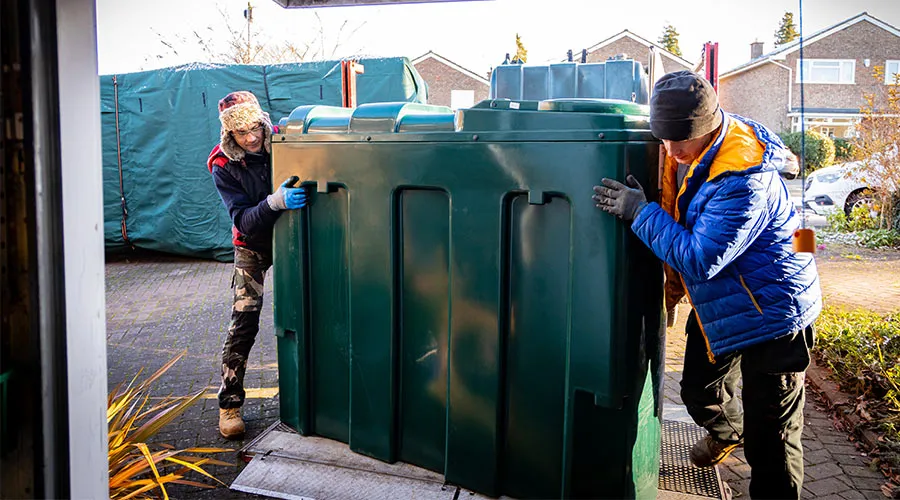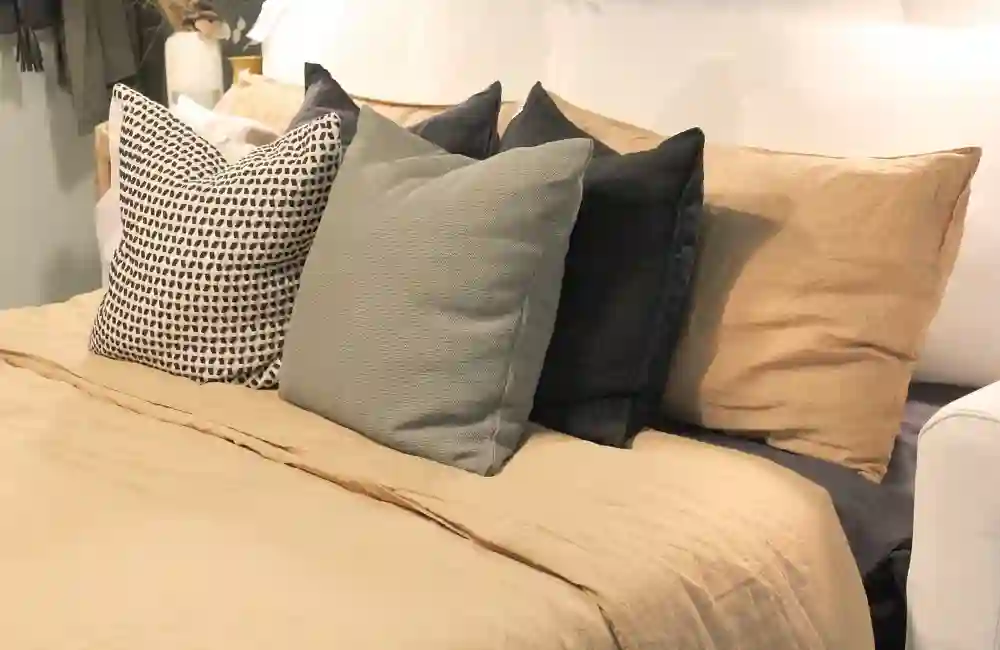Home & Garden
Unearthing Solutions: A Step-by-Step Manual for Oil Tank Removal

Oil tank removal is a crucial process that requires meticulous planning, adherence to regulations, and professional expertise to ensure safety and environmental protection. Whether prompted by regulatory requirements, property renovations, or proactive maintenance, the removal of oil tanks demands careful consideration and execution. In this step-by-step manual, we provide comprehensive guidance on the oil tank removal process, covering everything from preparation and assessment to disposal and site remediation.
Step 1: Pre-Removal Preparation
Before initiating the oil tank removal process, it is essential to undertake thorough preparation. This includes obtaining necessary permits and approvals from regulatory authorities, which may vary depending on the jurisdiction and local regulations. Property owners should also notify relevant stakeholders, such as neighbors and utility companies, about the impending removal to ensure safety and minimize disruptions.
Additionally, property owners should engage qualified professionals, such as environmental consultants or licensed contractors, to conduct a comprehensive site assessment. The assessment should include visual inspections of the tank and surrounding area, soil testing for contamination, and evaluation of potential environmental risks. Based on the findings of the assessment, property owners can develop a removal plan that addresses any identified issues and ensures compliance with regulatory requirements.
Step 2: Drainage and Purging
Once all necessary preparations have been made, the next step in the oil tank removal process is to drain the tank of any remaining oil and purge it of flammable vapors. This is typically done by a licensed contractor using specialized equipment and procedures to ensure safety and compliance with regulations. The contractor will carefully pump out the oil from the tank and dispose of it in accordance with applicable laws and regulations.
After draining the tank, the contractor will purge it of any residual oil and vapors to minimize the risk of fire or explosion during the removal process. This may involve flushing the tank with an inert gas, such as nitrogen, to remove oxygen and reduce the risk of combustion. Once the tank has been drained and purged, it is ready for removal from the site.
Step 3: Tank Removal
The actual removal of the oil tank is a delicate and precise operation that requires specialized equipment and expertise. The process begins with excavating the area around the tank to provide access for removal equipment and ensure safe working conditions. The tank is then carefully disconnected from any piping or attachments and lifted out of the ground using a crane or hydraulic lift.
During the removal process, contractors must take precautions to prevent spills, leaks, or damage to surrounding structures and utilities. This may involve using protective barriers, mats, or containment systems to minimize environmental impact and ensure safety. Once the tank has been removed from the site, it is transported to a licensed facility for proper disposal or recycling in accordance with regulations.
Step 4: Site Remediation
After the tank has been removed, the site may require remediation to address any contamination or environmental concerns that may have occurred during the removal process. This may include excavating and disposing of contaminated soil, treating groundwater, or implementing other remediation measures as necessary.
Site remediation should be conducted in accordance with regulatory requirements and best practices to ensure that any environmental impacts are properly addressed and mitigated. Property owners should work closely with qualified environmental consultants and contractors to develop and implement a remediation plan that meets all regulatory standards and safeguards the health and safety of the surrounding environment.
Step 5: Post-Removal Documentation and Monitoring
Once the oil tank removal and site remediation processes have been completed, property owners should maintain documentation of the removal activities, including permits, inspection reports, disposal records, and remediation plans. This documentation may be required for regulatory compliance purposes or future property transactions.
In addition to documentation, property owners should also consider implementing post-removal monitoring programs to ensure that any residual contamination or environmental impacts are properly managed and addressed. This may involve periodic soil testing, groundwater monitoring, or visual inspections to verify that the site remains in compliance with regulatory standards and is safe for future use.
Conclusion:
Oil tank removal is a complex and multifaceted process that requires careful planning, expertise, and adherence to regulatory requirements. By following the step-by-step manual outlined in this guide, property owners can navigate the oil tank removal process with confidence and ensure that their properties remain safe and environmentally responsible. From pre-removal preparation and drainage to tank removal, site remediation, and post-removal monitoring, each step of the process plays a critical role in safeguarding the environment and protecting public health. By taking a proactive approach to oil tank removal and following best practices, property owners can mitigate risks, comply with regulations, and promote sustainability for future generations.

Home & Garden
The Ultimate Guide to Mold Evaluation: Understanding the 4 Process and Its Importance

Mold can be harmful and often goes unnoticed until it causes damage. But what is mold, and how does it grow in our homes? Understanding the 4 steps of mold evaluation is important.
These steps help us learn how mold spreads and how to stop it from becoming a problem. Mold might not seem like a big issue. Yet, it can affect our health and our homes.
In this post, we will give helpful tips on how to spot, treat, and prevent mold. Stay with us to learn how to protect your home and family from mold.
1. Inspection
Mold has a tendency to thrive in damp and hidden places, making it crucial for homeowners to proactively check for its presence. Health risks associated with mold exposure include respiratory issues, allergies, and even more severe conditions like asthma and lung infections.
The first step in the mold evaluation process is to conduct a thorough inspection of your home. This is where a professional mold testing will identify areas with signs of moisture, water damage, or existing mold growth. Using specialized tools such as moisture meters, inspectors can detect elevated moisture levels even in concealed spaces, ensuring that no hidden mold is overlooked.
2. Sampling
If mold is suspected or found during the inspection, the next step involves sampling. This can be done in two ways: air sampling and surface sampling.
Air sampling collects air samples to measure the concentration of mold spores in the air, while surface sampling involves taking swabs or bulk samples from suspected mold-rich areas to identify specific types of mold. Each method helps in determining the mold’s extent and type, which is crucial for effective remediation.
3. Lab Analysis
Once the samples are collected, they are sent to a laboratory for analysis. This step is vital in confirming the type and quantity of mold present. Specific mold species may require different remediation approaches.
For instance, Stachybotrys chartarum, commonly known as black mold, is notorious for causing health issues and requires meticulous handling. Lab results inform property owners about the necessary remediation steps to take.
4. Report and Action Plan
The final phase of the evaluation process involves compiling a detailed report based on the inspection and lab analysis results. This report outlines the findings, including where mold was found, its extent, and the recommended action plan for remediation.
Homeowners should follow the action steps diligently to ensure that the mold issue is thoroughly addressed. Often, it is advisable to hire specialists to carry out certified mold inspections in Central Florida, as they can implement effective strategies tailored to the specific mold problem.
Learn the Importance of Mold Evaluation
Understanding the process and its importance of mold evaluation is crucial in mold prevention and financial losses. By following a thorough and systematic approach, we can accurately identify and remediate mold growth, creating a safe and healthy environment.
Make sure to prioritize mold evaluation to maintain a safe living space. Take action today and schedule a mold evaluation for your property.
Looking for more tips and advice? You’re in the right place! Make sure to bookmark our page and come back to check out more interesting articles.
Read More latest Posts
- Yotube to wav: Converting YouTube Videos for Professional Audio
- House Party topics that will impress your friends
- Yellow butterfly meaning: The Joyful Symbol of Spiritual Awakening
- Yiff Party: Everything you need to know about this controversial platform
- #TurboGeek.org: Discover the Best Educational Resources for Tech
Home & Garden
How to Make Your Bed and Seating Areas More Inviting With Pillow Shams

Why Pillow Shams Matter
Decorative pillow shams might seem like a small thing, but they are mighty in terms of style and comfort! These covers not only protect your sleeping pillows, but they add a major layer of texture and style to your bed. So if fun, playful prints are your jam or maybe more soft, neutral color palettes, finding the perfect pillow shams can help to tie your whole bedroom look together. Your eyes and your heart will thank you.The Perfect Pairing: Layering for Style
Making an impact using pillow shams is really all about the layering game. You want to build up the layers! Start by layering your clean sleeping pillows in the back and then adding your beautiful pillow shams in front of them. The contrast is so pretty. Using different sizes adds visual interest. Mix in your Euro sham with your standard sleeping pillow and you’ll create that hotel living vibe of luxury! Don’t forget you can easily use shams to elevate your design in a seating area by using them on throw pillows. Serena & Lily has some beautiful shams in various textures and colors to fit your design style. These designs really channel the gorgeousness of coastal living, and who doesn’t love that warm, cozy feeling with that clean, polished look?!Color and Pattern Play
One of the best parts of picking out pillow shams is the ability to showcase your personality. Are you a fan of refined luxury or bold excitement? If your sheets and blankets are solid, go for fun, printed shams that really pop. If you have a multi-color comforter or quilt, find a corresponding set of simple pillowcases, thus balancing the overall look of your bed. Don’t be afraid to play with patterns! Experiment with two styles to see if they pair well. How about a colorful floral & bold stripes set? Experimentation is the name of the styling your bed with shams game!Seasonal Swaps
Who says you have to get just one set of shams for your bed deal? Changing the cases for your bed pillows is an easy way to refresh a room and keep the decor looking current. To cozy up the bedroom for the fall and winter, lush velvets in rich hues are an opulent choice. Shop for bright and upbeat shams in light fabrics for the spring and summer months.Final Touches To Your Sham-full Home
After you’ve chosen some perfect pillow shams, adding the finishing touches is one more way to really make your bed or seating arrangement an irresistible oasis. Try a comfy throw blanket or a fun tray to organize coffee and your favorite books. Small details like these can transform any setup into a classy comfy escape.A Bed You Want to Sleep In and a Sleeping Area You Want to Sit On
Nothing says, “Come here and have the best sleep relaxation of your life,” like a well-decorated space. Now, what if you could come home to that every day? Here is the great news: with pillow shams, you can. So hightail it to Serena & Lily and get the most gorgeous pillow shams that will make you never want to leave your room!Read More latest Posts
- Yotube to wav: Converting YouTube Videos for Professional Audio
- House Party topics that will impress your friends
- Yellow butterfly meaning: The Joyful Symbol of Spiritual Awakening
- Yiff Party: Everything you need to know about this controversial platform
- #TurboGeek.org: Discover the Best Educational Resources for Tech
Home & Garden
Are Energy-Efficient Sliding Windows Right for Your Home?

Are energy-efficient sliding windows the best choice for your home? These windows offer a range of benefits, including energy savings and improved comfort. Let’s explore if they’re the right fit for your living space.
Benefits of Energy-Efficient Sliding Windows
Energy-efficient sliding windows are designed to minimize heat loss and help maintain a stable indoor environment. They are made with advanced insulation and low-emissivity glass coatings to improve temperature control within the home. Pella sliding windows, for example, feature these energy-saving elements to reduce heat transfer, leading to lower utility bills. In warmer months, these models keep the heat out, and in colder months, they help retain warmth inside.
In addition to improving comfort, these models reduce the load on HVAC systems, meaning they don’t have to work as hard to maintain ideal temperatures. As a result, homes experience lower energy consumption. This efficiency is especially noticeable in areas with extreme climates. Energy-efficient models enhance indoor comfort and reduce a home’s carbon footprint by lowering energy usage. Over time, they provide both environmental and financial benefits.
Aesthetic Appeal and Functionality
The wide glass panes allow for a clear, unobstructed view of the outdoors, thus enhancing natural light in the room. This makes them perfect for areas where a bright, open feel is desired. Their minimalist design blends seamlessly with modern and traditional home styles, contributing to an elegant look.
Additionally, the horizontal sliding mechanism makes these windows easy to operate, requiring little effort to open or close. This feature is particularly useful in spaces with limited room, such as areas with furniture or plants. Unlike traditional types with hinges or sashes, sliding windows are less prone to wear, ensuring smooth operation for years. Their design makes them ideal for those seeking both functionality and style.
Key Features to Consider
The type of glass used plays a crucial role in insulation. Double or triple glazing offers superior protection against heat transfer. Low-emissivity (Low-E) glass coatings are also essential for reflecting heat back into the room during the winter and keeping it out during the summer months. Here are a few other factors to keep in mind:
- Frame materials: Durable, well-insulated frames, such as vinyl, fiberglass, and wood-clad options, enhance energy efficiency.
- Weatherstripping: Proper seals prevent drafts and moisture buildup.
- Energy ratings: Consider certifications like Energy Star or a low U-factor rating for maximum insulation.
- Security features: Secure locking systems add an extra layer of safety.
Long-Term Savings and Return on Investment
Although the initial cost of installing these windows may be higher than traditional models, the savings they generate quickly make up for the difference. Reduced energy bills over time can offset the installation expense, leading to a positive return on investment. These are built to last, providing long-term durability and reducing the need for frequent repairs or replacements. In colder climates, they help prevent condensation that can lead to mold and mildew, which adds to their value. Additionally, many local governments offer incentives, rebates, or tax credits for installing energy-efficient products, making the upgrade even more cost-effective in the long run.
Are Sliding Style the Right Choice for Your Home?
When deciding whether these windows are the right fit, consider their functional and aesthetic benefits. If improving energy efficiency, enhancing comfort, and reducing maintenance are priorities, sliding windows are an excellent option. Their sleek design complements various home styles, making them versatile for different settings. Always buy and take guidance from reputed sellers.
Energy-efficient sliding windows, such as Pella sliding windows, provide numerous advantages, from reducing energy costs to enhancing the home’s visual appeal. With their long-term savings and stylish design, they make a valuable investment. For anyone looking to upgrade their home, these windows offer both immediate and lasting benefits.
-

 Food & Recipes9 months ago
Food & Recipes9 months agoFive Food Products You Must Avoid Giving to Your Infant
-

 Travel11 months ago
Travel11 months agoOnboardicafe.com Login Exploring the Delights of Onboardicafe
-

 Health & Fitness8 months ago
Health & Fitness8 months agoSuboxone Tooth Decay Lawsuits and the Pursuit of Justice Against Indivior
-

 Sports11 months ago
Sports11 months agoThe Most Popular Sports In The World
-

 Sports7 months ago
Sports7 months agoSmart Solutions for Football Field Maintenance
-

 Entertainment11 months ago
Entertainment11 months agoNavigating the Web: The Ultimate List of Tamilrockers Proxy Alternatives
-

 Sports6 months ago
Sports6 months agoWearable Tech and the Future of Football
-

 Technology4 months ago
Technology4 months agoThe Rise of Blockchain Technology









